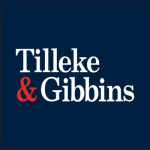Since the enactment of Laos’ first Law on Intellectual Property in 2007, the country has issued periodic amendments and updates to bring the law into line with current practices and needs. The latest of these, issued in November 2023 (the 2023 Law on IP), was published in the Lao official gazette on March 1 2024.
Some of the most notable changes and updates under the 2023 Law on IP are highlighted below.
Trademarks
Laos introduced online trademark registration in November 2023, and the 2023 Law on IP brought several key changes to the regime for protecting trademarks in the country. The new law eases the burden of proof for well-known marks, removing ambiguous terms such as ‘territory’ and ‘country’ to make it clear that global circulation and recognition of a product can establish a mark as well known, though some uncertainty remains surrounding the exact criteria that must be met.
Laos’ treatment of trade names has also undergone changes. Unlike the 2017 Law on Intellectual Property, the 2023 amendment requires trade names to be registered to be protected against infringement.
Cancellation
The 2023 Law on IP allows cancellation requests for trademarks, industrial designs, and geographical indications within five years of registration publication and introduces cancellation for registrations made in bad faith or incorrectly. The law grants explicit authority to assess bad faith post registration.
Exhaustion of rights
The 2023 Law on IP introduces the concept of exhaustion of rights, meaning trademark rights are exhausted once the product is sold, potentially impacting parallel imports. However, conflicting provisions allow trademark owners to prevent unauthorised use or sale, requiring further clarification.
Industrial designs
Under the 2017 Law on IP, one of the requirements for protecting an industrial design was to provide evidence that the design was new and not formerly disclosed. The 2023 Law on IP provides greater clarity on the methods of disclosure, now explicitly recognising the use of electronic media, such as websites and social media, as a form of disclosure.
Patents and petty patents
Similarly, the 2023 Law on IP recognises electronic media as a means of disclosure, clarifying that an invention publicly available online in Laos is not novel. The amended law also made changes to the requirements for applying for some patents and petty patents. Applications must now disclose the origin and community or ethnic group for inventions derived from genetic resources or traditional know-how.
Geographical indications
Under the 2023 Law on IP, protection of a geographical indication now starts from the filing date of the application instead of from the date of registration.
Copyright
The 2023 Law on IP expands the scope of copyright to include “other works of art” and electronic creations, and the term for applied art and pictures has been extended from 25 to 30 years.
Use of counterfeits
The 2023 Law on IP now expressly prohibits counterfeiting, modifying, or using the IP rights of another person for commercial gain without authorisation from the rightful IP owner. This potentially opens the door to non-commercial personal use of counterfeit goods.
Final thoughts on Laos’ 2023 Law on IP
The 2023 Law on IP introduces significant updates and enhancements to Laos’ IP regulatory framework, marking a pivotal step in the country's ongoing commitment to robust IP protection. Noteworthy changes include streamlined criteria for well-known trademarks, mandatory registration of trade names, and clarified disclosure requirements for industrial designs and patents. The law also introduces the concept of exhaustion of rights, potentially influencing parallel import practices.
By expanding the scope of copyright protection to include electronic works and extending the protection term for applied art, the new law reflects Laos’ dedication to fostering innovation and safeguarding intellectual creativity. These amendments aim to attract foreign investment and align Laos’ IP laws with international standards, ensuring comprehensive protection for creators and innovators.












